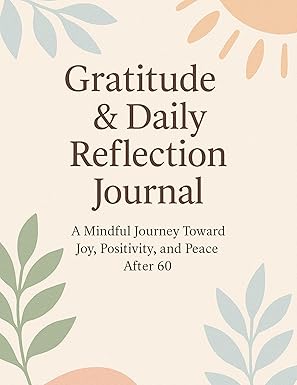Everyday Stability
Build steadier balance after 60 with an 8-minute ankles-hips-core routine, foot/ankle micro-habits, and a simple home safety checklist to prevent falls.
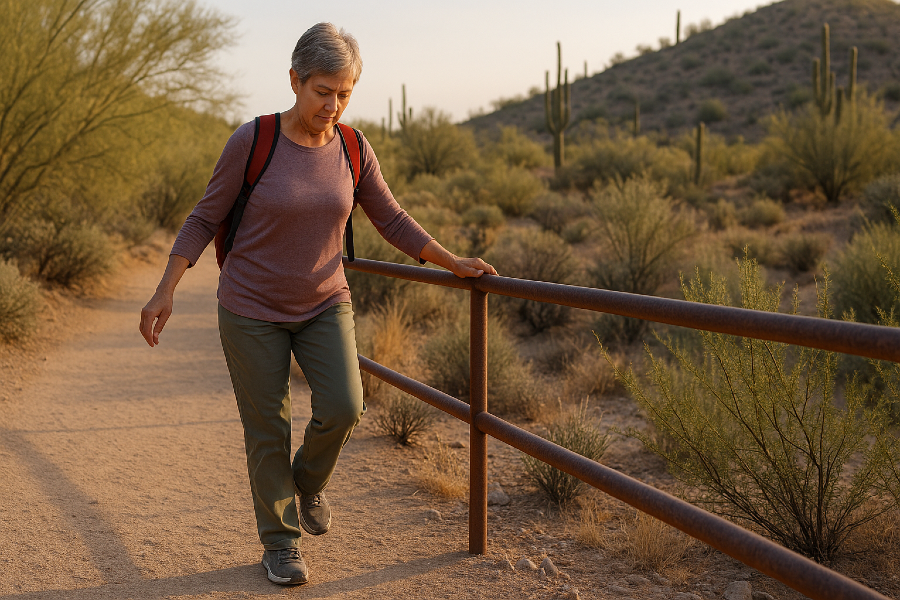
Fall-Prevention After 60: The 8-Minute Ankles–Hips–Core Routine for Everyday Stability
If you want to hike safer, climb stairs with confidence, and feel steadier day to day, this is for you. I talk about short strength in my Hike Strong routines and about muscle support in Protein + Power, but I haven’t given you a simple, step-by-step balance plan until now. This one is quick, joint friendly, and made for real life.
Always listen to your body. Use a counter, wall, or chair for support. If you feel dizzy, sharp pain, or numbness, stop.
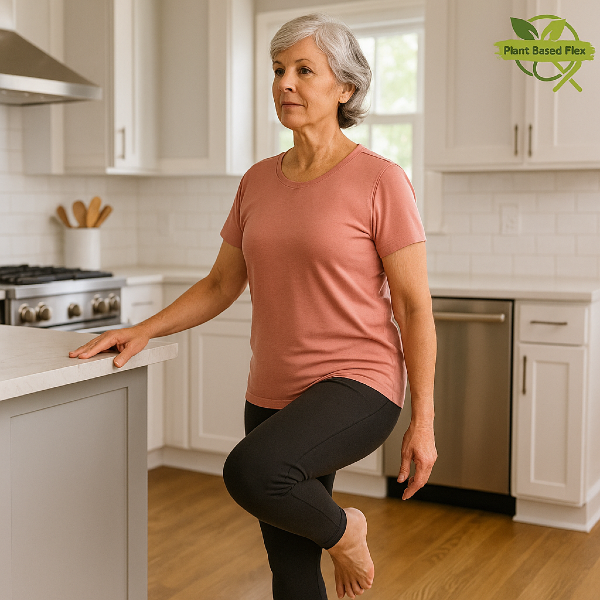
Why balance declines after 60 (plain language)
- Feet and ankles get stiff. Less motion means weaker stabilizers and slower reaction time when you trip.
- Hips and core lose strength. Glutes act like your body’s side-to-side brakes. When they weaken, you wobble.
- Sensory feedback dulls. Eyes, inner ear, and foot nerves talk to your brain to keep you upright. If any of those signals fade, your body has to work harder to stay steady.
- Confidence drops. After a scare or a fall, you tense up. Tension makes movement choppy and balance worse.
The fix is simple practice: gentle mobility, small doses of strength, and a few seconds of single-leg work most days.
The 8-Minute Ankles–Hips–Core Blueprint
How often: 4–6 days per week
Equipment: Chair or counter for support, a step or low stair, towel or small ball (optional), toe spacers or a cork ball (optional)
Tip: Set a timer. Move slowly. Breathe through your nose when you can.
Minutes 0–2: Ankle rocks + calf pump
- Ankle rocks (60 sec): Stand tall, hold a counter. Gently rock weight from heels to balls of feet, small range.
- Calf pump (60 sec): Slow heel raises up for 2 counts, down for 3. Light support as needed.
Make it easier: Seated ankle circles.
Make it stronger: Pause at the top for one count.
Minutes 2–4: Tib raises + arch wake-ups
- Tib raises (60 sec): Back to a wall, heels 6 inches out. Lift toes up, lower with control.
- Short-foot drill (60 sec): Barefoot if possible. Gently “hug” the floor with your arch without curling toes. Hold 3 seconds, relax.
Note: These wake up the front of the shin and the foot tripod for better foot placement.
Minutes 4–6: Single-leg stance progressions
- Supported single-leg stance (30 sec each side): Lightly touch the counter.
- Add a head turn (30 sec each side): Keep eyes on the horizon, turn head slowly left and right.
Make it easier: Keep both big toes down and just shift weight.
Make it stronger: Let go of support for last 10 seconds, or close one eye for 5 seconds.
Minutes 6–7: Hip hinge to chair
- Hip hinge (60 sec): Tap hips back to a chair, light sit, stand tall. Think “chest proud, knees soft, weight in heels.”
Make it easier: Higher chair.
Make it stronger: Pause one second just above the seat. Hold a light backpack.
Minute 7–8: Step-ups + posture set
- Step-ups (30 sec each side): Use a 4–8 inch step. Up-up, down-down with control, no bouncing.
- Posture set (final 10 seconds): Tall stance, crown of head to the sky, gentle chin nod, ribs stacked over hips, soft belly breath.
Optional finisher (30–60 sec if you have time):
- Toe spacers or foot rolling: Slip in toe spacers while you cool down, or roll the sole gently on a cork ball.
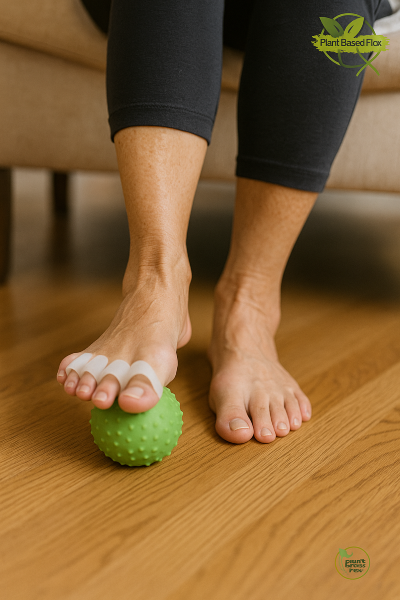
Micro-habits that make this stick
- Barefoot minutes at home. Start with 3–5 minutes on safe floors to wake up foot muscles.
- Talk-test pacing. On walks or stairs, move at a pace where you can speak in full sentences. If you lose the talk test, slow it down.
- Stair strategy. Hand on rail, eyes on the step, whole foot planted, steady exhale as you rise.
- Pause before you pivot. Before turning quickly, plant your feet, breathe out, then turn.
- Carry smart. Hold loads close to your body. Split groceries between two bags.
Home safety mini-audit (10 minutes this week)
Lighting
- Night lights for bedroom, hall, and bathroom
- Add a lamp near the bed for easy reach
Floors and layout
- Secure rugs with non-slip pads or remove them
- Keep walkways clear of cords and clutter
- Place a stable chair near entries for shoe changes
Shoes
- Choose firm heel cup, flexible forefoot, no floppy back
- Replace worn soles with poor grip
Bathroom
- Non-slip mat in tub or shower
- Consider a grab bar if needed
Outdoors
- Check for uneven surfaces at the door and walkway
- Keep a broom by the door to clear small debris
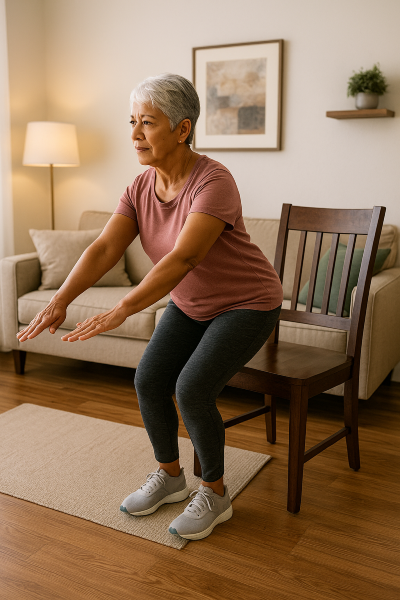
How to progress over 4 weeks
- Week 1: Do the routine with support. Aim for calm breathing and smooth control.
- Week 2: Reduce hand support by half. Add 5 seconds to single-leg holds.
- Week 3: Add a gentle head turn in single-leg stance. Pause longer above the chair in hip hinges.
- Week 4: Use a slightly higher step for step-ups or hold a light pack. Try eyes-closed for 3 seconds on single-leg with a counter fingertip ready.
Win of the week: when everyday tasks feel easier. Stairs smoother, less foot fatigue, fewer stumbles.
Pair it with these posts for faster results
- Hike Strong for simple conditioning you can layer on top of this routine.
- Protein + Power for the muscle support that helps strength stick.
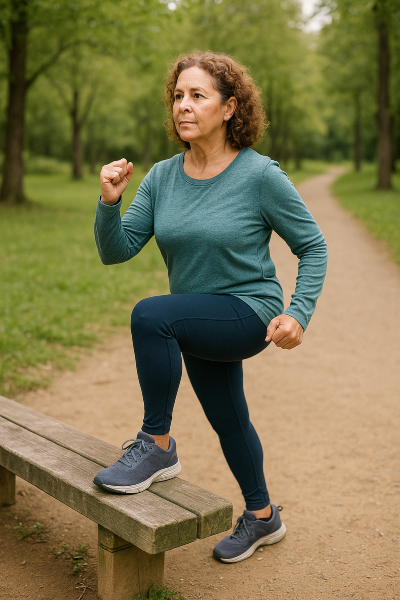
FAQ
How quickly will I feel steadier
Many people notice better control in 1–2 weeks. Real change builds over 4–8 weeks with short daily practice.
What if my knees feel cranky
Keep ranges small, slow the tempo, and use a higher chair for hip hinges. If pain persists, skip that move and keep the ankle and balance work.
Can I do this before a walk or hike
Yes. It is a great primer. Do 1 round before you head out.
Freebie: “Trail-Steady Balance Plan” (Printable)
Download my FREE Trail-Steady Balance Plan PDF - the perfect one-page checklist to take with you!
Quick summary you can copy into your notes
- 8 minutes most days: ankles, shins, arches, single-leg, hinge, step-ups
- Barefoot minutes, talk-test pacing, smart stairs
- Home mini-audit: lights, rugs, shoes, bathroom, entry
- Progress weekly: less support, slightly longer holds, small challenges
You’ve got this. Small, steady practice beats big, random workouts.
A gentle note
I am sharing what works for me as a healthy, natural, vibrant woman in my sixties. This is educational content, not medical advice. Choose trails and roles that match your comfort and the heat.
Ready to make it natural
Pick one thing for this week. A walk with a coworker. Coffee with a friend. An hour with art. A short volunteer shift. Then notice how you feel.
Gratitude & Daily Reflection Journal: A Mindful Journey Toward Joy, Positivity, and Peace After 60
A gentle, guided space to cultivate gratitude and presence each day. Simple prompts, calm reflections, and encouragement to thrive beyond 60.
Disclaimer:
This content is for informational purposes only and is not intended as medical advice. Always consult your healthcare provider before making any changes to your diet, supplements, or lifestyle—especially if you have existing conditions or take medication.
💌 Haven’t joined the Plant Based Flex blog yet?
It’s completely free, and when you confirm your email, I’ll send you my 7-Day Kickstart Wellness Bundle to help you start thriving beyond 60.

